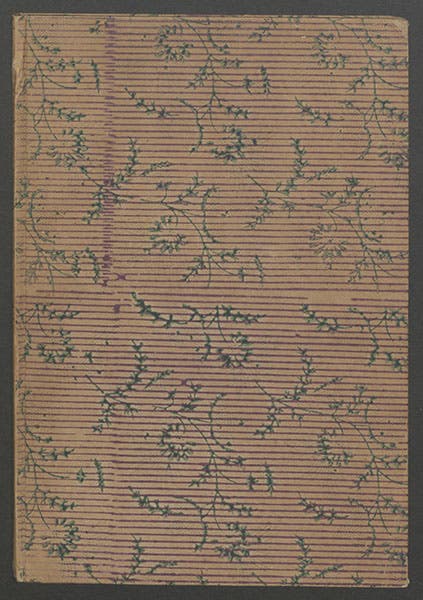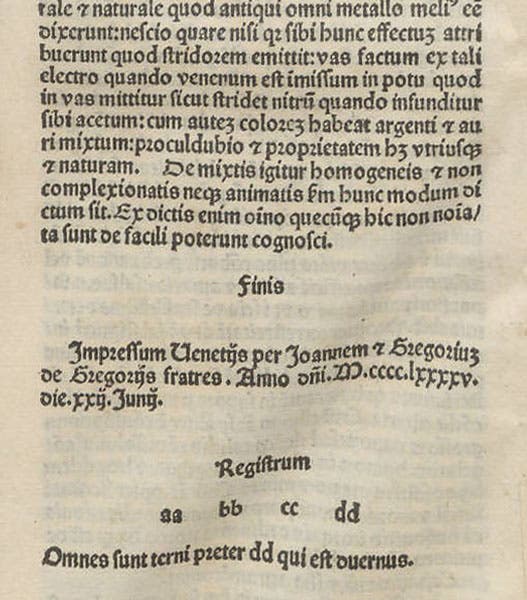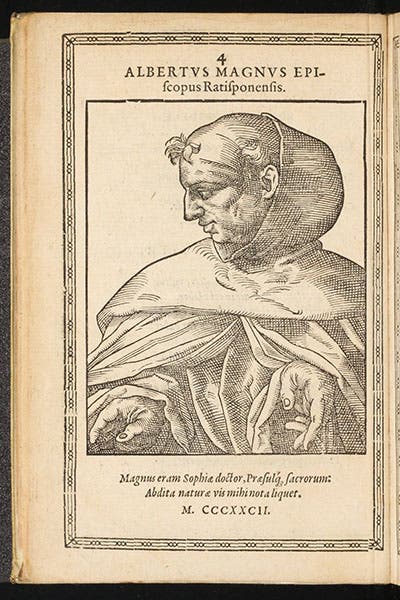Scientist of the Day - Albertus Magnus
Albertus Magnus, a German scholastic philosopher, died Nov. 15, 1280, at an age over 80; his date of birth is not known. By any measure, Albertus was the greatest natural scientist of the Middle Ages. His work began, as did all nearly all medieval scholarship, as a series of commentaries on Aristotle. While Bishop of Regensburg, around 1260, he produced a commentary on Aristotle's 19-book treatise on zoology, De animalibus. Albert added two books of his own observations, and then a 5-book lexicon and dictionary of animals, making 26 books in all. His own observations consisted of such things as noting that Aristotle was wrong about a crocodile being unable to move its lower jaw, and suggesting that the legendary ant-lion of antiquity – a monstrous half lion, half ant – was probably based on a wasp that digs pits in the sand to trap ants, which Albert says he himself had observed. Albert's De animalibus was the most popular scholarly book on animals for the next 300 years and inspired 5 incunables, the first in 1478, and 20 more editions in the 16th century. Sadly, we have not a single early edition of Albert's commentary on animals in our collections.
Albert also wrote commentaries on Aristotle's Meteorologica and De mineralibus, which comprised most of the the classical legacy of knowledge about the earth, its metals and minerals, and how they formed. In addition, Albert wrote his own De mineralibus, around 1250, in which he revealed extensive personal knowledge about mining, the extraction of ores, and basic metallurgy – the liberation of metals from ores. Within his book on minerals was a separate treatise on gemstones. Since Aristotle did not write one, Albert filled the void with his own lapidary, which later became quite popular on its own. Here again, we see that Albert liked to test out handed-down knowledge, confirming for example that hematite works well on wounds to stop blood flow.
Albert's De mineralibus also went through 5 editions before 1501, the first in 1476. The edition of 1495 was especially nice, and Herbert Hoover had two copies of that printing in his extensive geology library, assembled when he was a mining engineer. One copy of Albert's De mineralibus went, with the rest of Hoover’s library, into the rare book collection of Claremont College in Pomona, California. The other copy sat on a "duplicates" shelf at Claremont until I saw it there in 1983 and suggested that it (and 18 of its fellow duplicates) might find a more rewarding home at the Linda Hall Library. An offer was made and accepted, and we now have that beautiful copy of Albert's great work on minerals in our collections.
We show here the front cover of the 1495 De mineralibus; the first page; a detail of that page, where, in the absence of a title page, you can see Albert's name and the title; and a view of the colophon at the end, with the printer and publication date.
We have three early printed portraits of Albert among our various portrait books – none of them contemporary, but as close in time as one is likely to come; we reproduce two of them here. Our opening portrait, an engraving, comes from Jean-Jacques Boissard's three-volume Icones (1597-99; first image). The portrait that closes this piece, a woodcut, is found at the very beginning of Nikolaus Reusner's Icones (1590; sixth image). It seems safe to conjecture that both are based on the same painted portrait, one unknown to us.
Dr. William B. Ashworth, Jr., Consultant for the History of Science, Linda Hall Library and Associate Professor emeritus, Department of History, University of Missouri-Kansas City. Comments or corrections are welcome; please direct to ashworthw@umkc.edu.









![Using an astrolabe to measure the depth of a well, woodcut in Elucidatio fabricae vsusq[ue] astrolabii, by Johannes Stöffler, 1513 (Linda Hall Library)](https://assets-us-01.kc-usercontent.com:443/9dd25524-761a-000d-d79f-86a5086d4774/a998eb50-55d2-4a88-ace2-a50aa5fa86e7/Stoffler%201.jpg?w=210&h=210&auto=format&fit=crop)

